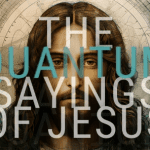The proposal to proclaim the adhan or Muslim call to prayer from the top of Duke Chapel’s bell tower today provoked a number of reactions. These ranged from the vitriolic and vengeful to the dismayed and discomforted. From the deluge of emails the university received and the long strings of comments posted after articles covering the issue appeared on websites, these overwhelmingly negative reactions came not just from Christians but also from Jews and those of no faith. One could have predicted that, in the current climate, particularly in the immediate aftermath of the Charlie Hebdo killings, any such action would provoke such a strong reaction. Yet it seems that those who initiated the proposal to proclaim the adhan did not anticipate it. An interesting feature of the situation is that the proposal did not come from Muslim student groups on Duke’s campus, but from the Chapel’s associate dean for religious life. Not anticipating the strong reaction seems to be why the wider university was not consulted or given advance notice of the plan, so there was little time to prepare for or reflect further on the ramifications of such an action. Yet, as with any such gesture, the action is in the reaction.
So what reaction did those who made this proposal seek? It had three aims. The first was to enable the ‘interreligious reimagining of a university icon’ by which was meant that the proclaiming of the adhan would demonstrate how different faith traditions can occupy the same shared space while still retaining their distinct identities. The second was to communicate ‘to the Muslim community that it is welcome’ at Duke. And the third was to challenge ‘media stereotypes of Muslims.’ It is an understatement to say these aims were not achieved. While the intentions were laudable, the reality is that the action generated a deeply counter-productive reaction that undermines all three of the stated aims.
What the action does raise is the question of how should we undertake inter-faith relations in a time when the relationship between different faiths and political life is under intense, often violent negotiation at a local, national, and international level throughout the world. This is no small matter. What should be the response for those who, like the leaders of Duke Chapel, are seeking to find a pro-active and constructive response to events in the world and thereby show a better way of fostering a peaceable common life? Is such a response best undertaken by religious professionals and specialists, and conceived of as a directly religious action, as happened at Duke? Or is it best to find ways to manage inter-faith relations from “above” by governments and the likes of university administrators? Or should such responses emerge from bottom up, peer-to-peer, relationally driven initiatives understood as forms of civic rather than religious practice?
The university is a microcosm of the broader public sphere in which these questions are being both constructively and negatively addressed. On campuses in the US and UK one observes three basic approaches to addressing religious diversity. The oldest is the establishment model. As a legacy of an institution’s history and customary practice, a confessionally Christian chapel has the status of being first among equals and is the means through which other traditions of belief and practice, notably Islam, Judaism, Buddhism and Hinduism, often gain access to university resources and are credentialized. In the case of Duke, the Chapel largely functions in this way. Religions on this model are seen to have a valid and important public institutional presence within the broader life of the institution as a whole.
Read the rest here















